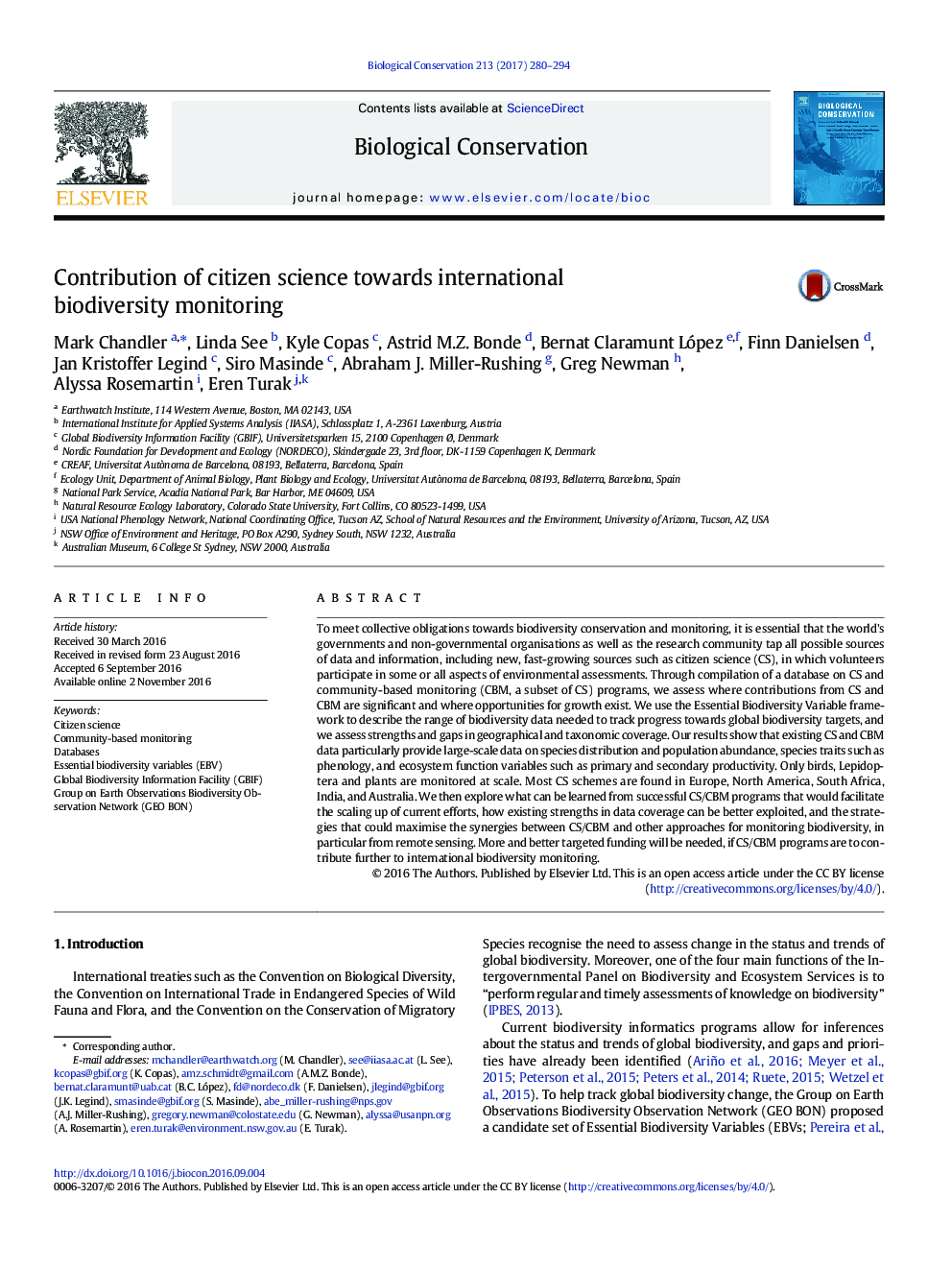| کد مقاله | کد نشریه | سال انتشار | مقاله انگلیسی | نسخه تمام متن |
|---|---|---|---|---|
| 5743051 | 1412294 | 2017 | 15 صفحه PDF | دانلود رایگان |
- CS programs assessed for contributions to essential biodiversity variables (EBV).
- Most Essential Biodiversity Variables are monitored by citizens or communities.
- But significant data gaps remain taxonomically and geographically.
- Opportunities are identified to expand data coverage globally by citizen science.
- Capitalise on apps with global reach, networks, publishing tools, and portals
- Synergies between citizen science and remote sensed data hold great potential.
To meet collective obligations towards biodiversity conservation and monitoring, it is essential that the world's governments and non-governmental organisations as well as the research community tap all possible sources of data and information, including new, fast-growing sources such as citizen science (CS), in which volunteers participate in some or all aspects of environmental assessments. Through compilation of a database on CS and community-based monitoring (CBM, a subset of CS) programs, we assess where contributions from CS and CBM are significant and where opportunities for growth exist. We use the Essential Biodiversity Variable framework to describe the range of biodiversity data needed to track progress towards global biodiversity targets, and we assess strengths and gaps in geographical and taxonomic coverage. Our results show that existing CS and CBM data particularly provide large-scale data on species distribution and population abundance, species traits such as phenology, and ecosystem function variables such as primary and secondary productivity. Only birds, Lepidoptera and plants are monitored at scale. Most CS schemes are found in Europe, North America, South Africa, India, and Australia. We then explore what can be learned from successful CS/CBM programs that would facilitate the scaling up of current efforts, how existing strengths in data coverage can be better exploited, and the strategies that could maximise the synergies between CS/CBM and other approaches for monitoring biodiversity, in particular from remote sensing. More and better targeted funding will be needed, if CS/CBM programs are to contribute further to international biodiversity monitoring.
Journal: Biological Conservation - Volume 213, Part B, September 2017, Pages 280-294
